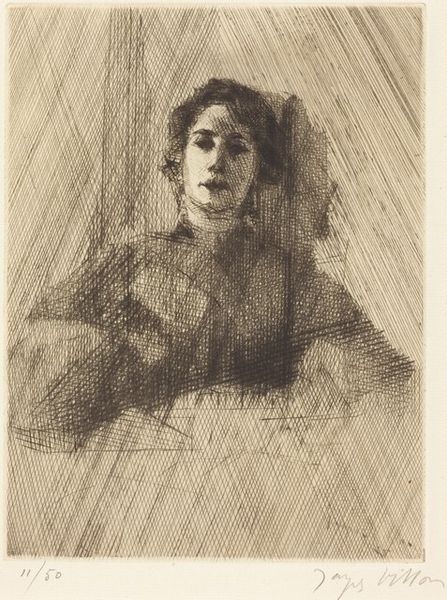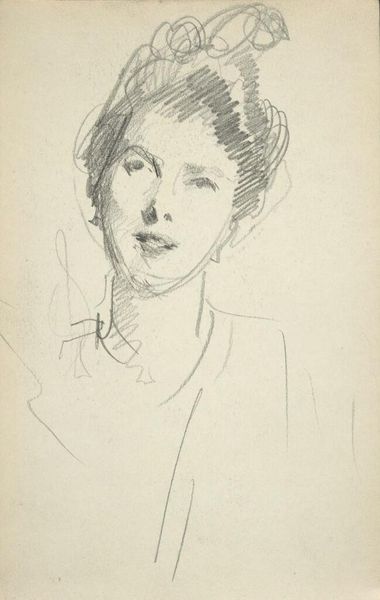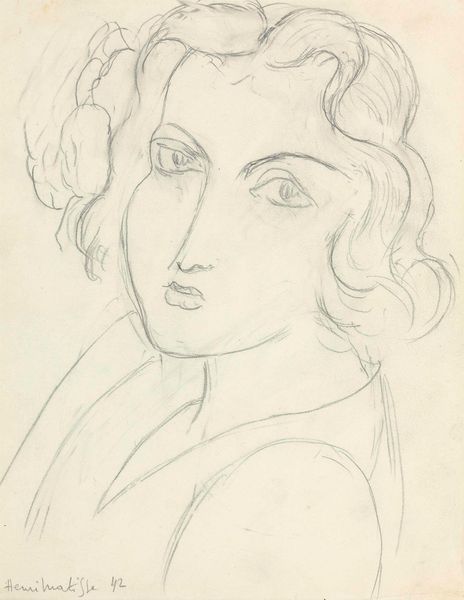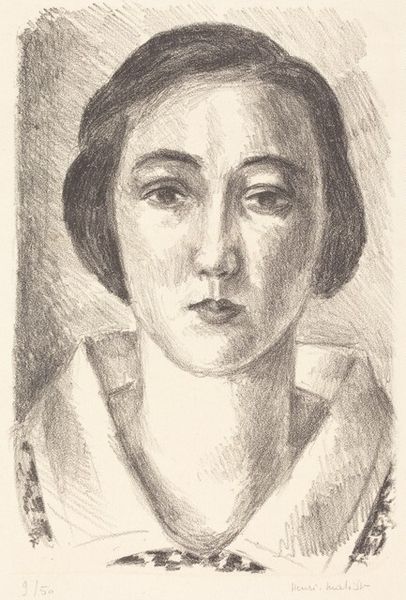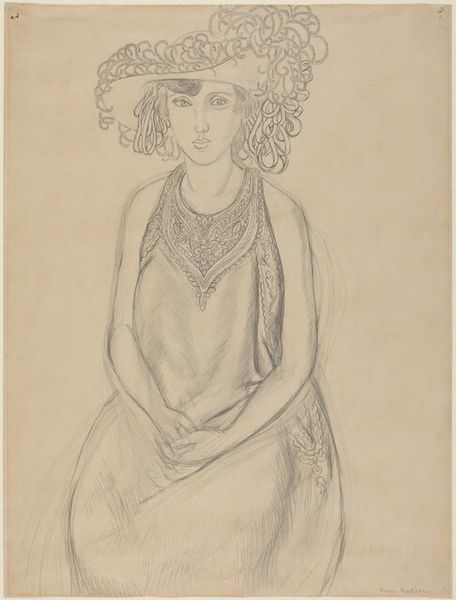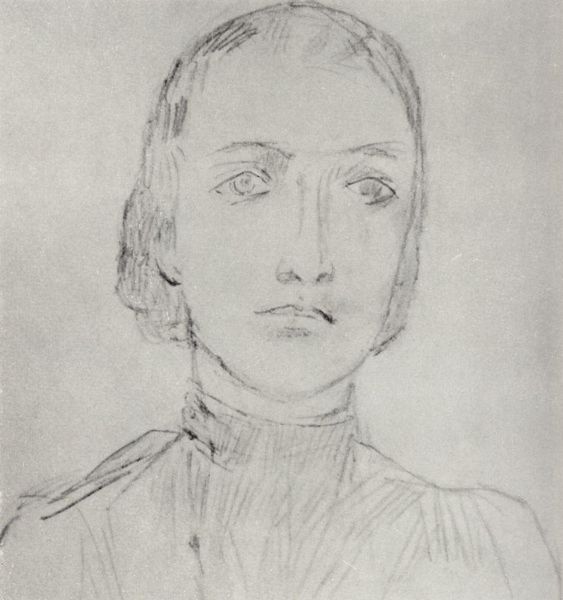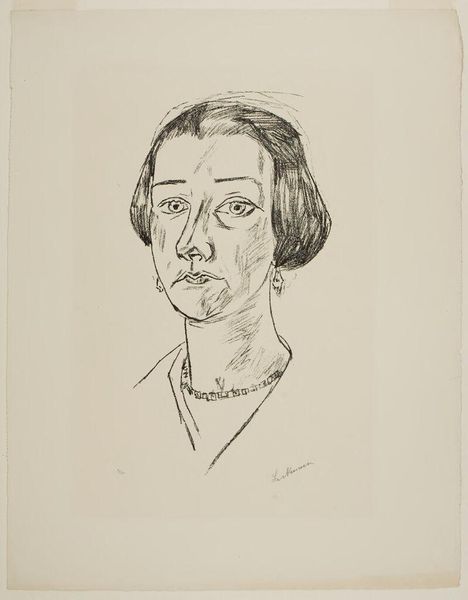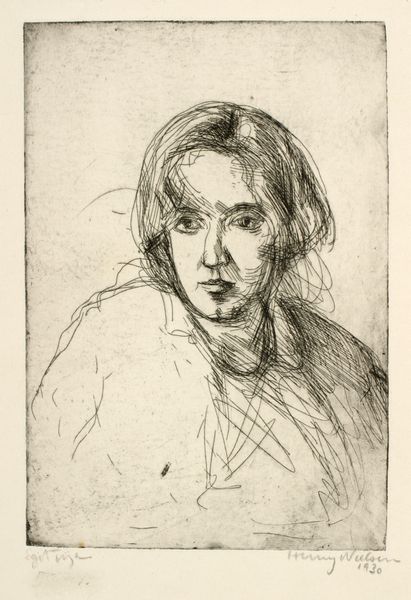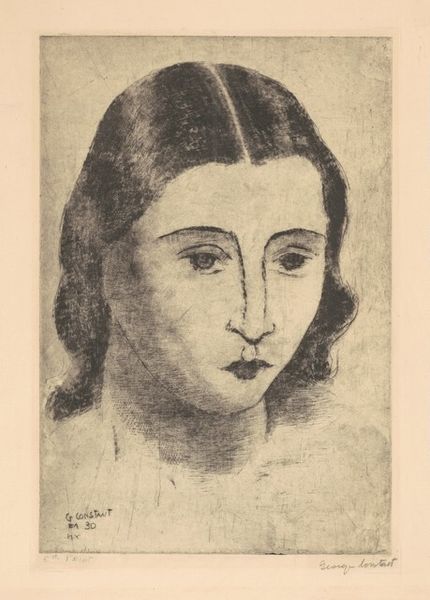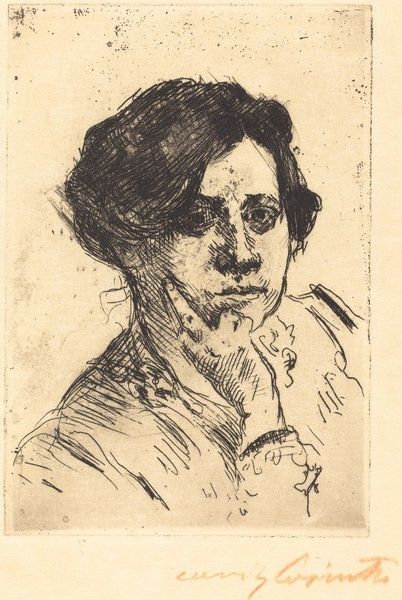
drawing, print, etching, graphite
#
portrait
#
drawing
# print
#
etching
#
graphite
#
portrait drawing
#
realism
Copyright: Public Domain: Artvee
Editor: This is a print of "Valéria Krommer, rod. Weisz", created around the 1980s by Arnold Peter Weisz-Kubínčan. It’s rendered in graphite and etching, which gives it a delicate yet firm feel. What stories do you think this artwork is trying to tell? Curator: I see a portrait of a woman situated within a specific historical and social context. The sitter’s direct gaze and the artist’s choice of rendering her in etching and graphite – mediums often associated with both intimacy and a sense of permanence - makes me reflect on themes of identity and memory. The very act of creating a portrait, especially within a family, what might this gesture mean? Does it relate to the establishment of kinship networks? Legacies? Editor: I hadn't considered it as a document for her family; I was more focused on the subject's expression, but now I understand your point! Curator: And what does "Valéria Krommer, rod. Weisz" tell us? That surname 'Weisz' connects her to a specific lineage, perhaps one impacted by displacement or persecution during the mid-20th century. Thinking about portraiture through an intersectional lens, can you consider it as an archive of resistance and survival? Editor: Wow, I guess it really makes one reconsider portraiture more deeply. Now I'm wondering if the family requested this of Weisz, or was this the artist's own way of honoring her? Curator: Exactly. By situating this portrait within broader historical narratives, particularly those of displacement, we are confronted with complex questions of identity, representation, and remembrance. How can we ensure these personal narratives are interwoven into larger historical accounts? Editor: That’s a lot to think about. I didn’t realize how much a simple portrait could say about the times and about women who lived through it. Thanks so much for opening my eyes!
Comments
No comments
Be the first to comment and join the conversation on the ultimate creative platform.
